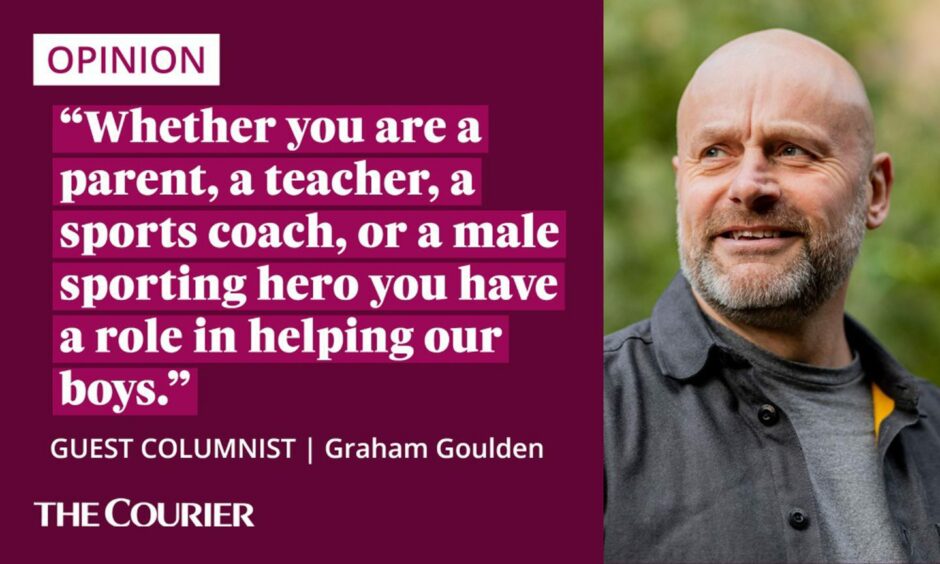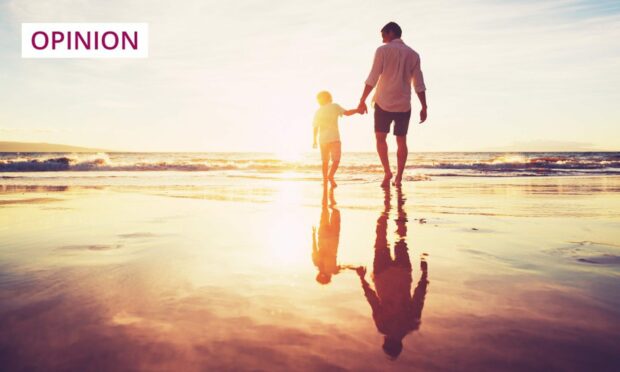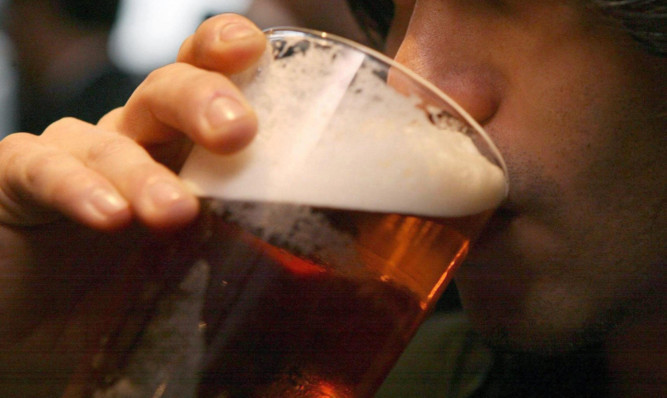Cast your mind back a few weeks to when Chloe Kelly scored the winning goal in extra time for England against Germany, securing a 2-1 win and the country’s first ever women’s major tournament victory.
In the minutes after the goal, social media was awash with posts saying what a powerful moment this was for women and girls.
I agree.
For me, the moment captured the potential for sport to be a catalyst for change.
In the days after the final, I reflected on this moment and wondered why we have so many women looking out for girls so visibly, but we don’t see a similar number of men having those kinds of aspirations for our young boys.
Surely our boys deserve better?

In the last few weeks, there have been three media stories which have rightly captured the news debate here in Scotland.
What hasn’t been discussed much within these stories is the role that men play in all of them.
Statistics don’t tell the whole story
When the drug death numbers for Scotland were released in July, the focus was on the total of deaths.
The story became a political football for many with little or no attention being focused on the fact that around 70% of drug deaths involve men.
Likewise, when the suicide statistics for Scotland were released, again the focus was on numbers, not the fact that three out of four suicides in Scotland involved men.
And lastly, the release of deaths caused by alcohol in Scotland was again dominated by political parties and individuals criticising responses.
As in the other stories, men featured disproportionately.
Two thirds of the deaths caused by alcohol involved men.
And again, little or no discussion took place on this.
When we simply look at numbers, we fail to look at risk factors.
Looking at men doesn’t mean we ignore women in these statistics.
We need to consider how to reduce harms to everyone.
But we also need to be smarter and to ask some uncomfortable questions.
Such as – why do boys and men feature disproportionately in these stories?
Love seeing the male social media influencers using words such as harm and seeing a role for men. Was a pleasure to spend some time with them sharing my views on active bystander-ship and mens role in preventing these acts. #SpeakUpInterrupt https://t.co/9Cf9HTmK6k
— Graham Goulden (@Graham_Goulden) August 24, 2022
When we don’t, we fail men and the boys who will continue to die until we have these conversations.
Male role models can help show the way
As a society we need to get better at looking out for each other.
But I also feel we need to be ever mindful of the risks that boys and men face.
There’s a clear role for us to be the male role models that our boys look up to and are inspired by.
Whether you are a parent, a teacher, a sports coach, or a male sporting hero you have a role in helping our boys.
As men we are the guideposts for the next generation.
We need to learn to better notice the challenges we face as men – and work to provide the skills that will help boys overcome them.
As men, we can help them develop their character.
We can speak to them about what they stand for, their values as an individual.
I call this their brand. And we can help them build their brand, their presence.
Your greatest superpower is your presence.
Character matters.
Channel the power of healthy relationships
Anyone working with or living with young boys needs to be thinking about the skills they need to become healthy and emotionally strong men.
How we help provide these skills will go a long way to reducing suicide, drug, and alcohol addiction for the long term.
Andrew Tate is what happens when you leave a generation of boys unprotected and uncared for. Some young men are so desperate for positive male role models that they actually admire men like Andrew Tate.
— Alchemical Daddy (@AlchemicalDaddy) August 22, 2022
For me, those skills would include finding and keeping friends, knowing it is ok to ask for help, being able to walk away from negative peer influence and being strong and gentle at the appropriate time.
They would also include taking responsibility, understanding the feelings of others and self (emotional intelligence), controlling anger, and keeping healthy and strong.
You know better than me the young boys and men you live or work with.
Invest in the relationships you have with them.
I learned many things in my policing career. But it was the power of the healthy relationship that stuck with me most.
It’s in these relationships that the magic happens.
It’s here we can make a real difference. Both in helping our boys in their lives and in reducing the many social issues that impact negatively on men and on wider society.
Graham Goulden is an experienced leadership and violence prevention trainer. For 30 years he was a Scottish police officer and chief investigator specialising in criminal investigation, drug investigation, training and crime prevention.













Conversation